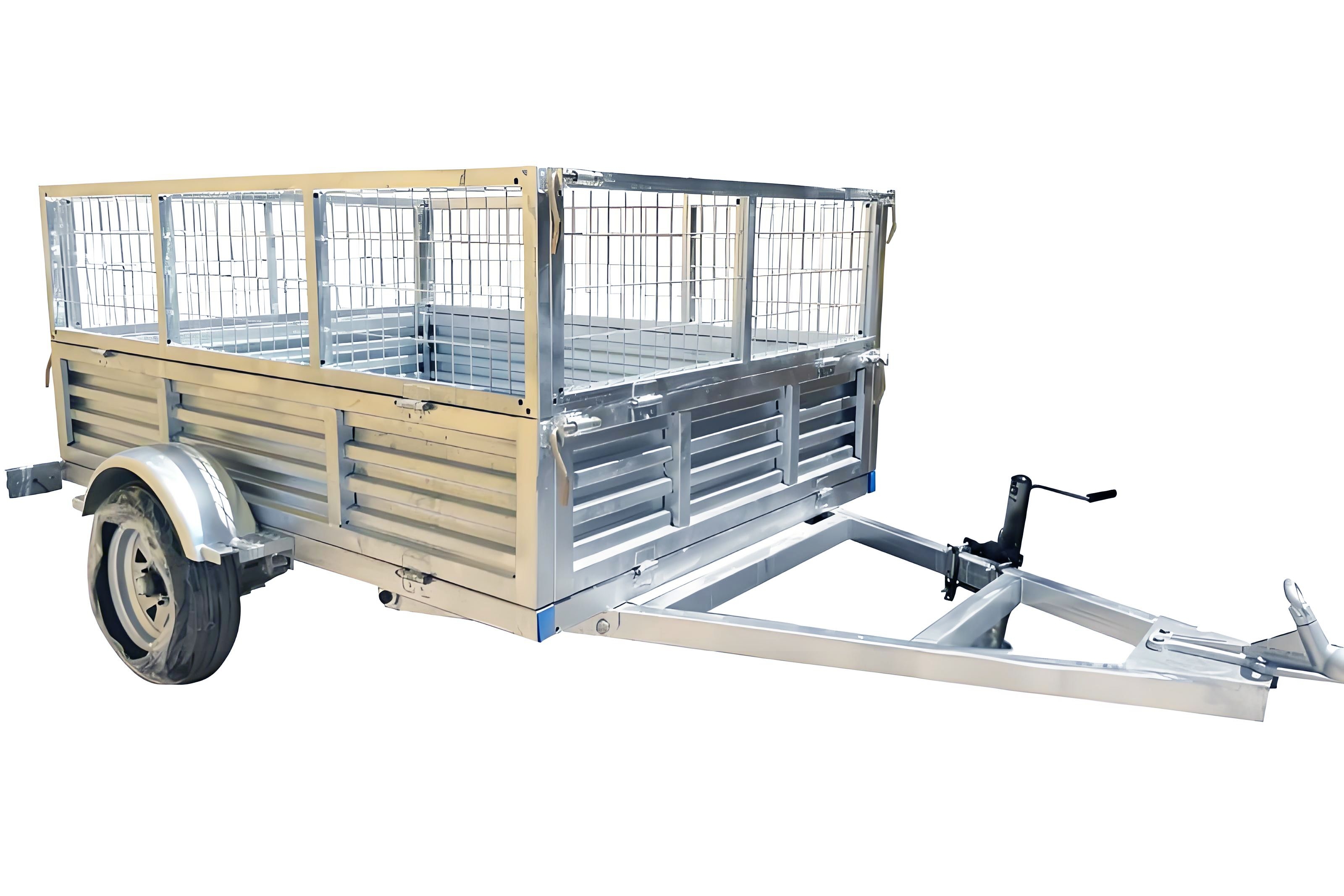How to Choose the Right Boat Trailer: Inland vs Coastal Marinas in the EU
Jul 12, 2025
Struggling to find the perfect trailer for your EU boating adventures? Choosing incorrectly can lead to costly damage, frustration at the ramp, or even safety hazards. The key difference? Inland waterways (lakes, rivers) demand different trailer features than harsh coastal marinas. Get it wrong, and saltwater corrosion or rough access roads could ruin your investment. This guide cuts through the confusion for EU buyers.
The Solution: Match Your Trailer to Your Waters
Don't make the common mistake of buying a "one-size-fits-all" trailer. Your boating environment dictates the essential specs:
For Coastal Marinas & Saltwater (EU): Saltwater is the enemy. You absolutely need full hot-dip galvanization (frame and components) to resist rapid corrosion. Look for stainless steel hardware (U-bolts, bolts, rollers) and sealed, waterproof bearings with external indicators. Robust braking systems (often surge brakes) meeting EU road regulations are crucial for heavier boats and longer trips common on coasts. Torsion axles provide a smoother ride on often rougher coastal access roads. Ensure CE certification is clearly stated, proving compliance with EU safety and environmental standards. Consider coastal marina boat trailer specifications focusing on maximum corrosion resistance and durability.
For Inland Waterways & Lakes (EU): While galvanization is still beneficial, electro-galvanized frames combined with quality paint can suffice for freshwater. Bearings need protection, but standard Bearing Buddies or lube systems are often adequate. Braking requirements depend on boat weight and local laws; lightweight boats may not need brakes, but always check EU regulations. Leaf spring axles offer a cost-effective solution for generally smoother inland ramps. Prioritize maneuverability and adjustability to handle potentially tighter spaces or variable ramp angles found on boat trailers for inland waterways Europe. Durability remains key, but the corrosion battle is less intense.
Technical Reference: What Really Matters
Beyond environment, focus on these core specs:
Weight Capacity (GTW & GAWR): Must exceed your boat + engine + gear + fuel weight. Never exceed! A variety of trailer sizes available ensures you find the perfect match.
Fit & Adjustability: Bunks/rollers must support your hull correctly. Adjustable components are vital for proper weight distribution and hull protection, especially if you upgrade boats.
Construction & Components: Opt for durable materials suited to your environment (galvanized steel, quality aluminum). Check axle type (torsion vs leaf), coupler rating, and tire quality.
CE Marking & OEM Manufacture: CE certification is non-negotiable in the EU, guaranteeing the trailer meets essential health, safety, and environmental requirements. Buying from a reputable OEM manufacture like AOEMAI ensures quality control, proper engineering, and access to parts/technical support.
Practice Makes Perfect: Real-World Scenarios
Scenario 1 (Coastal): Maria in Spain owns a 22ft fibreglass boat kept in a Mediterranean marina. She chose an AOEMAI boat trailer with full hot-dip galvanization, torsion axles, sealed bearing systems, and CE-certified surge brakes. Saltwater resistance and durability were her top priorities.
Scenario 2 (Inland): Lars in Germany trailers his 18ft aluminium fishing boat between several Bavarian lakes. He selected a trailer with a robust electro-galvanized frame, adjustable bunks, leaf springs, and standard bearing protectors. Finding a trailer offering a variety of trailer sizes available ensured perfect fit for his specific boat model. Maneuverability on narrow paths and value were key.
FAQ: Your EU Boat Trailer Questions Answered
Q: Can I use my freshwater trailer occasionally in saltwater?
A: Strongly discouraged. Saltwater will quickly corrode components not fully protected, leading to premature failure. Flushing helps but isn't a substitute for proper saltwater design.Q: Is CE certification really mandatory for all trailers in the EU?
A: Yes. Any new trailer sold within the EU must have CE marking, indicating compliance with the Machinery Directive and other relevant regulations. Never buy a trailer without it.Q: How do I know the right trailer size and capacity?
A: Know your boat's "trailer weight" (fully loaded). Add the weight of fuel and gear. Choose a trailer with a Gross Trailer Weight (GTW) rating exceeding this total. Consult your boat manual or dealer. Look for suppliers offering a variety of trailer sizes available.Q: Why choose an OEM manufacturer like AOEMAI?
A: OEM manufacture guarantees engineered solutions, consistent quality control, adherence to standards (like CE), and reliable access to spare parts and technical support, ensuring long-term value and safety.Q: What's the biggest maintenance difference?
A: Coastal trailers: Meticulous and frequent rinsing (especially underneath/inside frame) with freshwater immediately after saltwater immersion. Regular bearing service is critical. Inland trailers: Focus on bearing lubrication, tire pressure, and general inspection, with less intensive rinsing unless in silty/muddy waters. Durable components reduce maintenance overall.
Choose Confidently for Your Waters
Selecting the right boat trailer isn't just about transport; it's about protecting your valuable boat investment and ensuring safe, hassle-free launches and retrieves. By understanding the distinct demands of inland waterways versus coastal marinas in the EU, prioritizing environment-specific corrosion protection (full hot-dip galvanization for coast), ensuring CE certification, and selecting a durable trailer from a reputable OEM manufacture like AOEMAI that offers a variety of trailer sizes available, you can hit the road (and water) with complete peace of mind. Match your trailer to your marina, and enjoy the journey!


